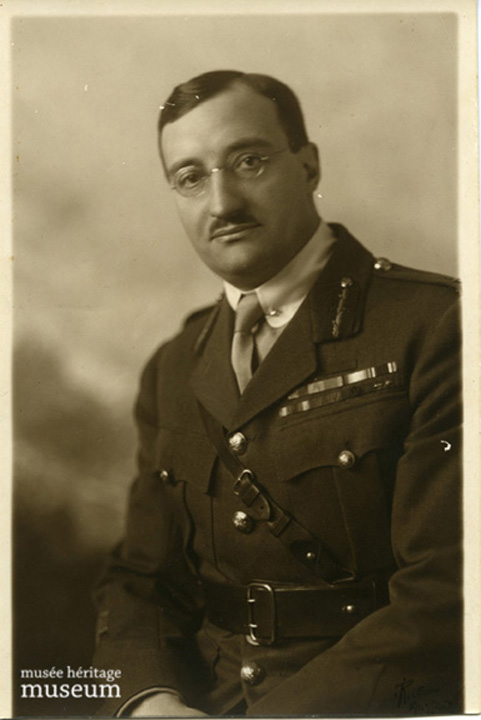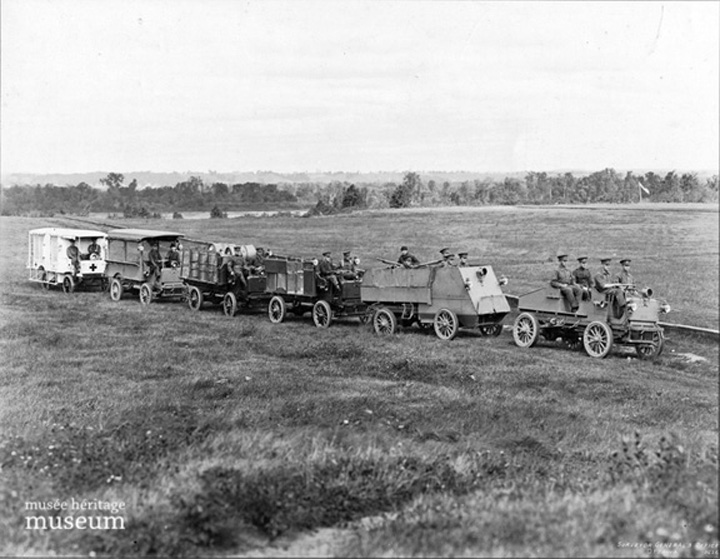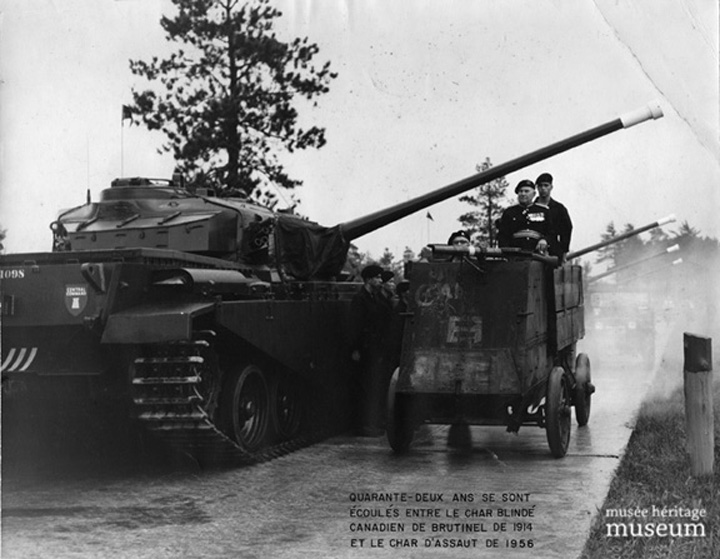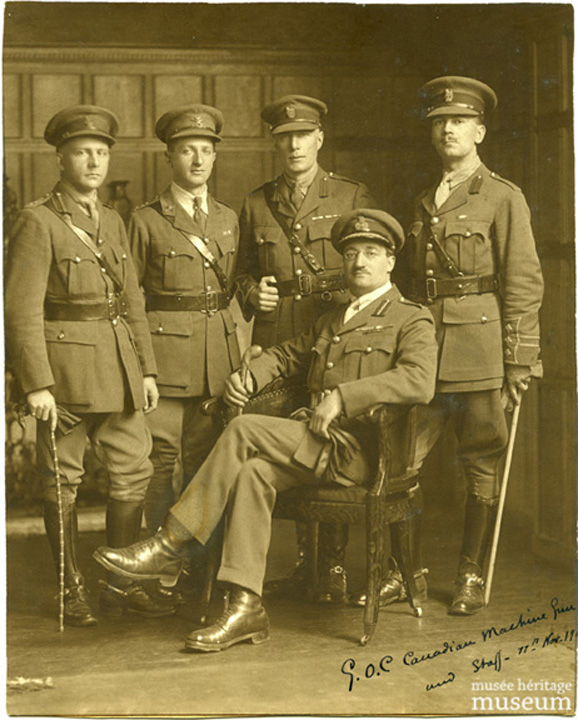French-born Raymond Brutinel immigrated to Edmonton in 1904 and made his fortune in Alberta through land and railway development. He had previously completed military service in France and had met Auguste de Verchère de Reffye, the inventor of an early model of the machine gun. With the declaration of war on August 4, 1914, Brutinel immediately thought of the potential use of machine guns.
Clifford Sifton, chair of the Canadian Commission of Conservation, heard about Brutinel’s ideas, met with him and, together, they developed two significant papers on weaponry. The first explored the use of machine guns, and the second proposed combining the fire-power of machine guns and the mobility of the automobile. They received the approval of Sam Hughes, Minister of Militia and Defence, to develop the concept and created a unit – the Automobile Machine Gun Brigade No. 1 – in August 1914. It is believed that this was the first of its type created during the war.


Photographer: Surveyor General’s Office in Ottawa. Photo courtesy of the Musée Héritage Museum CA MHM 2014.22.09
The Automobile Machine Gun Brigade No. 1 unit left for England on September 29, 1914. On June 16, 1915, it was renamed the 1st Canadian Motor Machine Gun Brigade and was deployed to France. In October 1915, the British adopted the Lewis Gun and also the creation of brigade machine gun companies. By January 1916, the 1st Canadian Division had three brigade Machine Gun Companies (1st, 2nd and 3rd); the 2nd Canadian Division added the 4th, 5th and 6th brigades; and the 3rd Canadian Division had the 7th, 8th and 9th brigades. In August, the 4th Canadian Division arrived with the 10th, 11th and 12th Machine Gun Companies.

Photographer: Surveyor General’s Office in Ottawa. Photo courtesy of the Musée Héritage Museum CA MHM 2014.22.07
Just in time for the Battle of Vimy Ridge, which took place from April 9th to 12th, the British Imperial Machine Gun Corps adopted “barrage fire” as its principal tactic to support “creeping artillery barrage.” This was first tested at the Battle of Vimy Ridge with all 16 machine gun corps, four British companies, and the 1st Canadian Motor Machine Gun Brigade seeing action. The Canadian Corps successful attack was supported by 358 machine guns. As a result, on April 16, 1917, a Canadian Order in Council approved Lt. General Sir Julian Byng’s earlier suggestion that the 16 machine gun companies be united under one command structure. This was first tested in the Fall of 1917 at Ypres in Belgium.

Photo courtesy of the Musée Héritage Museum CA MHM 2014.22.06

Photo courtesy of the Musée Héritage Museum CA MHM 2014.22.02
Brutinel rose to the rank of Brigadier-General, General Officer Commanding Canadian Machine Gun Corps and, during the 100 Days (August 8th to November 1918), commanded a formation called The Independent Force or “Brutinel’s Brigade.” Brutinel received honours from the British and French governments.
By Adriana A. Davies, CA, Cav. D’Italia, PhD
The Brutinel images are courtesy of Musée Héritage Museum, located in St. Albert, Alberta. The Brutinel Archives and his biography can also be found at the Musée Héritage Museum.
See also:
Champagne, Juliette, and Major (Retd) John Matthews. “Raymond Brutinel and the Genesis of Modern Mechanized Warfare.” In The Frontier of Patriotism: Alberta and the First World War. Calgary, AB: University of Calgary Press, 2016. URL: http://prism.ucalgary.ca/bitstream/1880/51593/2/Frontier_of_Patriotism_2016_frontmatter.pdf.

